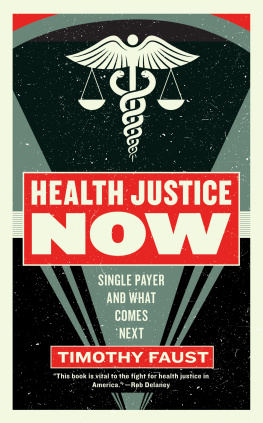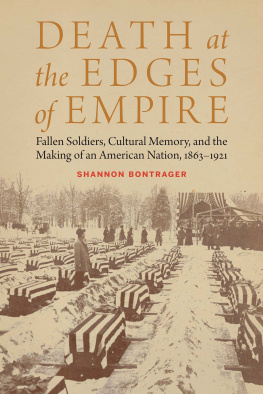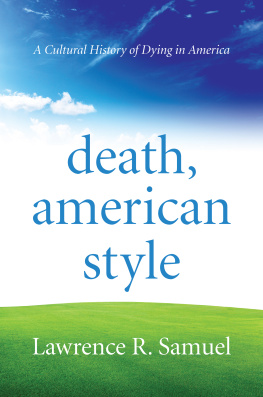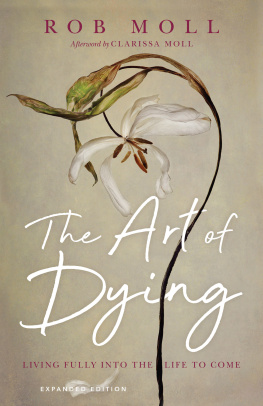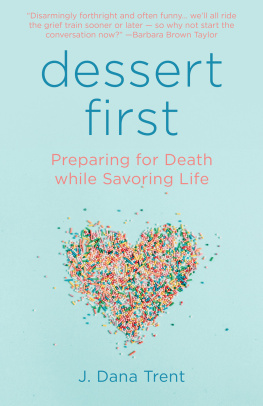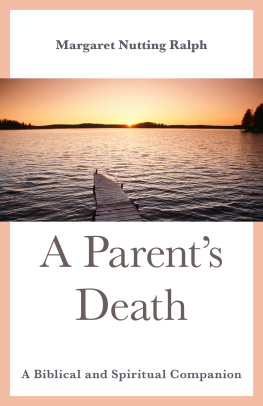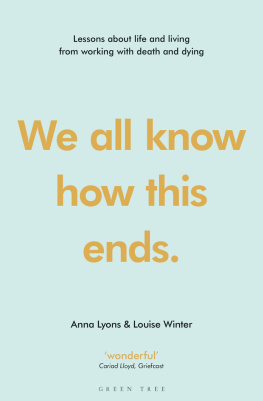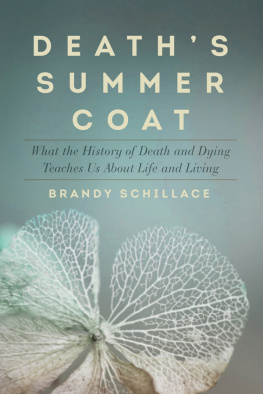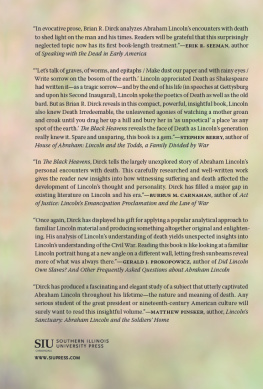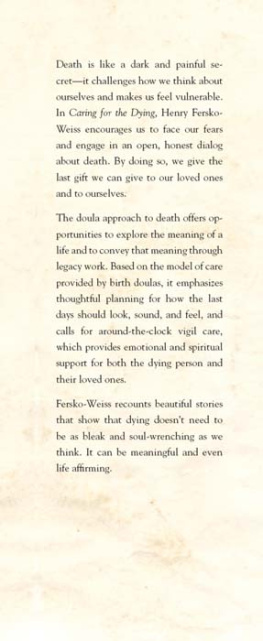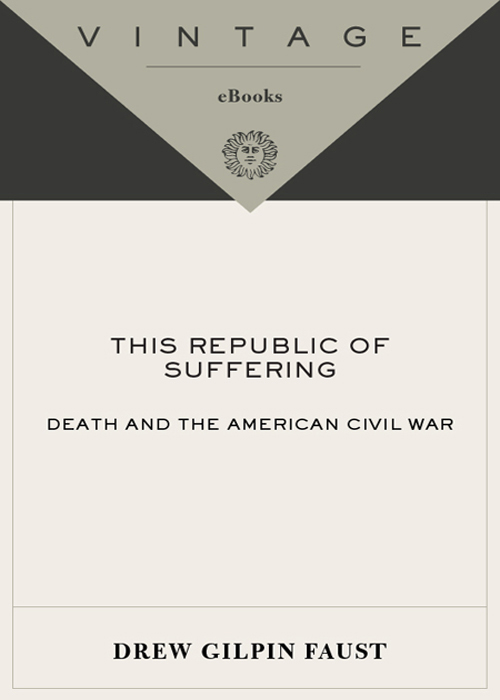
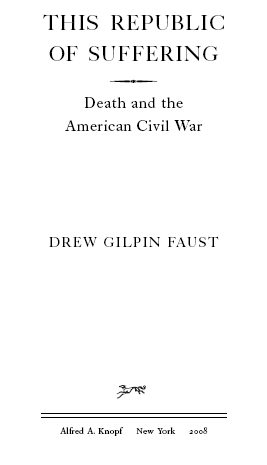
Contents
IN MEMORY
OF
MCGHEE TYSON GILPIN
19192000
Captain, U.S. Army
Commanding Officer
Military Intelligence Interpreter Team #436
6th Armored Division
Wounded, August 6, 1944
Plouviens, France
Silver Star
Purple Heart
Croix de Guerre
Illustrations
The True Defenders of the Constitution
Confederate Dead at Antietam, September 1862
Dying of Gangrene
An Incident at Gettysburg
The Letter Home
The Execution of the Deserter William Johnson
The Sixth Regiment of the Massachusetts Volunteers Firing into the People
The Army of the PotomacA Sharp-Shooter on Picket Duty
The War in TennesseeRebel Massacre of the Union Troops After the Surrender at Fort Pillow, April 12
Unidentified Sergeant, U.S. Colored Troops
Funeral of the Late Captain Cailloux
Soldiers Graves near General Hospital, City Point, Virginia
A Burial Party After the Battle of Antietam
Antietam. Bodies of Confederate Dead Gathered for Burial
Burying the Dead Under a Flag of Truce, Petersburg, 1864
Dead Confederate Soldiers Collected for Burial. Spotsylvania, May 1864
A Burial Trench at Gettysburg
Rebel Soldiers After Battle Peeling the Fallen Union Soldiers
Burial of Federal Dead. Fredericksburg, 1864
A Contrast: Federal Buried, Confederate Unburied, Where They Fell on the Battlefield of Antietam
Horse killed in the war. Sketch by Alfred R. Waud
The Burial of Latan
Maryland and Pennsylvania Farmers Visiting the Battlefield of Antietam While the National Troops Were Burying the Dead and Carrying Off the Wounded
Transportation of the Dead!
Business card for undertaker Lewis Ernde
Embalming Surgeon at Work on Soldiers Body
Dr. Bunnells Embalming Establishment in the Field (Army of the James)
Searching the casualty lists. Detail from News of the War by Winslow Homer
The United States Christian Commission Office at 8th and H Streets, Washington, D.C., 1865
Nurses and Officers of the United States Sanitary Commission at Fredericksburg, Virginia, During the Wilderness Campaign, 1864
Telegram from William Drayton Rutherford to Sallie Fair Rutherford
Advertisement for soldiers identification badges
Note by Oliver Wendell Holmes Jr.
Detail from News of the War by Winslow Homer
Ward K at Armory Square Hospital in Washington, D.C.
An Unknown Soldier
Henry Clay Taylor
Libby Prison, Richmond Virginia, April 1865
View of the Darlington Court-House and the Sycamore Tree Where Amy Spain, the Negro Slave, was Hung
John Saunders Palmer with his wife of less than a year, Alice Ann Gaillard Palmer
Half-mourning dress of Varina Howell Davis
Women in Mourning, Cemetery in New Orleans
View of the Burnt District, Richmond, Va.
Godeys Fashions for June 1862.
Women in Mourning at Stonewall Jacksons Grave, circa 1866
President Lincolns FuneralCitizens Viewing the Body at the City Hall, New York
Henry Ingersoll Bowditch at the time of the Civil War
The Dying Soldier
Battle-field of Gaines Mill, Virginia
Clara Barton, circa 1865
A Burial Party on the Battle-field of Cold Harbor, Virginia, April 1865
Miss Clara Barton Raising the National Flag, August 17, 1865
The Soldiers Grave
Hollywood Cemetery, Richmond, VirginiaDecorating the Graves of the Rebel Soldiers
Confederate Cemetery of Vicksburg
Walt Whitman
Preface
THE WORK OF DEATH
Mortality defines the human condition. We all have our deadwe all have our Graves, a Confederate Episcopal bishop observed in an 1862 sermon. Every era, he explained, must confront like miseries every age must search for like consolation. Yet death has its discontinuities as well. Men and women approach death in ways shaped by history, by culture, by conditions that vary over time and across space. Even though we all have our dead, and even though we all die, we do so differently from generation to generation and from place to place.1
In the middle of the nineteenth century, the United States embarked on a new relationship with death, entering into a civil war that proved bloodier than any other conflict in American history, a war that would presage the slaughter of World War Is Western Front and the global carnage of the twentieth century. The number of soldiers who died between 1861 and 1865, an estimated 620,000, is approximately equal to the total American fatalities in the Revolution, the War of 1812, the Mexican War, the Spanish-American War, World War I, World War II, and the Korean War combined. The Civil Wars rate of death, its incidence in comparison with the size of the American population, was six times that of World War II. A similar rate, about 2 percent, in the United States today would mean six million fatalities. As the new southern nation struggled for survival against a wealthier and more populous enemy, its death toll reflected the disproportionate strains on its human capital. Confederate men died at a rate three times that of their Yankee counterparts; one in five white southern men of military age did not survive the Civil War.2
But these military statistics tell only a part of the story. The war killed civilians as well, as battles raged across farm and field, as encampments of troops spread epidemic disease, as guerrillas ensnared women and even children in violence and reprisals, as draft rioters targeted innocent citizens, as shortages of food in parts of the South brought starvation. No one sought to document these deaths systematically, and no one has devised a method of undertaking a retrospective count. The distinguished Civil War historian James McPherson has estimated that there were fifty thousand civilian deaths during the war, and he has concluded that the overall mortality rate for the South exceeded that of any country in World War I and that of all but the region between the Rhine and the Volga in World War II. The American Civil War produced carnage that has often been thought reserved for the combination of technological proficiency and inhumanity characteristic of a later time.3
The impact and meaning of the wars death toll went beyond the sheer numbers who died. Deaths significance for the Civil War generation arose as well from its violation of prevailing assumptions about lifes proper endabout who should die, when and where, and under what circumstances. Death was hardly unfamiliar to mid-nineteenth-century Americans. By the beginning of the 1860s the rate of death in the United States had begun to decline, although dramatic improvements in longevity would not appear until late in the century. Americans of the immediate prewar era continued to be more closely acquainted with death than are their twenty-first-century counterparts. But the patterns to which they were accustomed were in significant ways different from those the war would introduce. The Civil War represented a dramatic shift in both incidence and experience. Mid-nineteenth-century Americans endured a high rate of infant mortality but expected that most individuals who reached young adulthood would survive at least into middle age. The war took young, healthy men and rapidly, often instantly, destroyed them with disease or injury. This marked a sharp and alarming departure from existing preconceptions about who should die. As Francis W. Palfrey wrote in an 1864 memorial for Union soldier Henry L. Abbott, the blow seems heaviest when it strikes down those who are in the morning of life. A soldier was five times more likely to die than he would have been if he had not entered the army. As a chaplain explained to his Connecticut regiment in the middle of the war, neither he nor they had ever lived and faced death in such a time, with its peculiar conditions and necessities. Civil War soldiers and civilians alike distinguished what many referred to as ordinary death, as it had occurred in prewar years, from the manner and frequency of death in Civil War battlefields, hospitals, and camps, and from the wars interruptions of civilian lives.4
Next page

